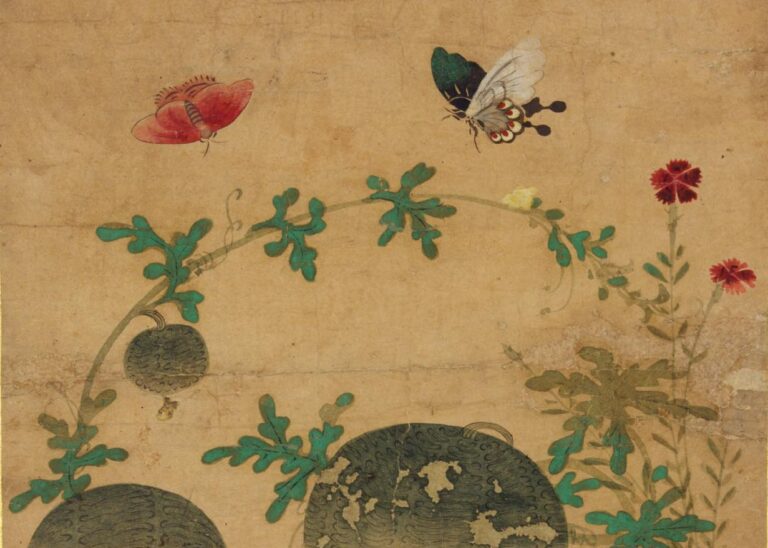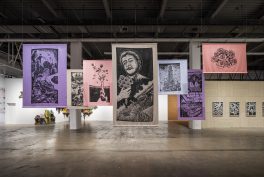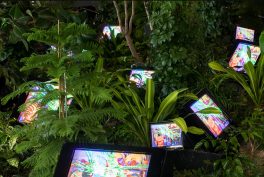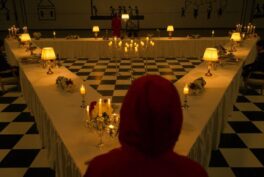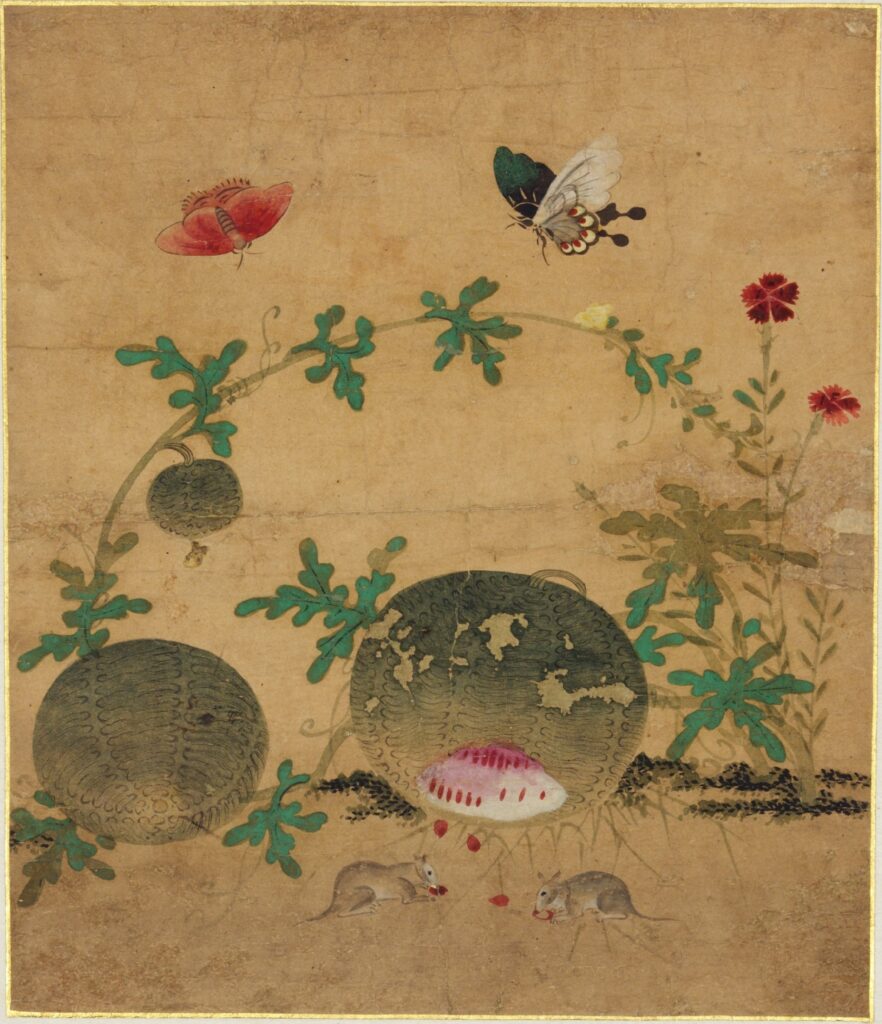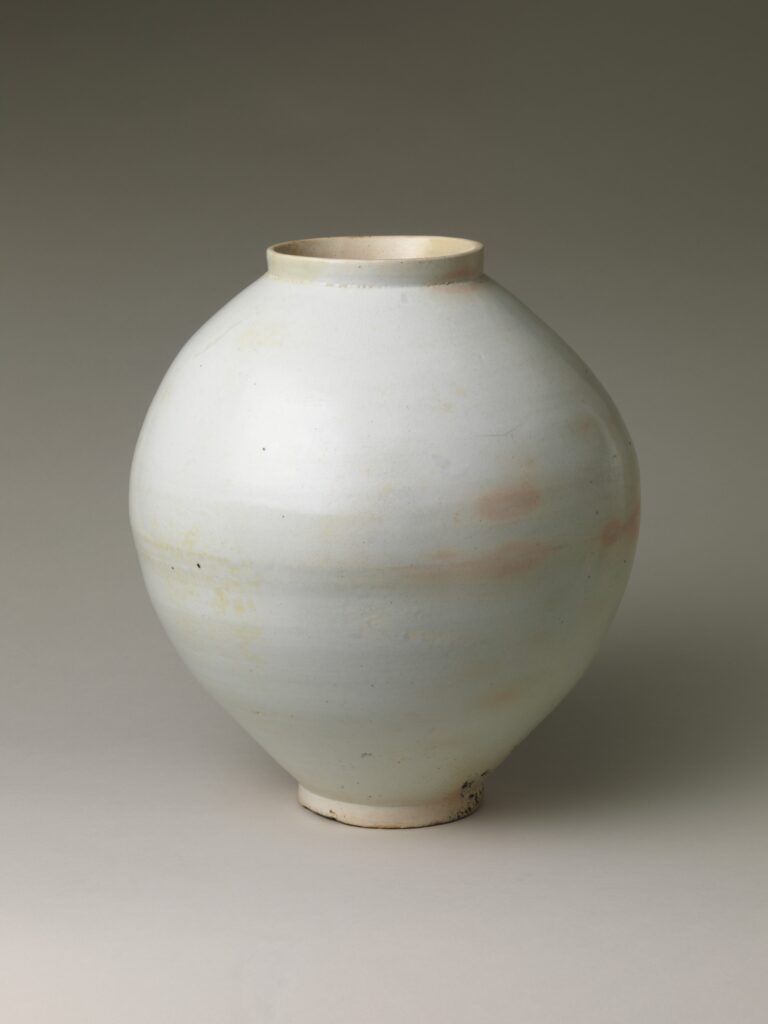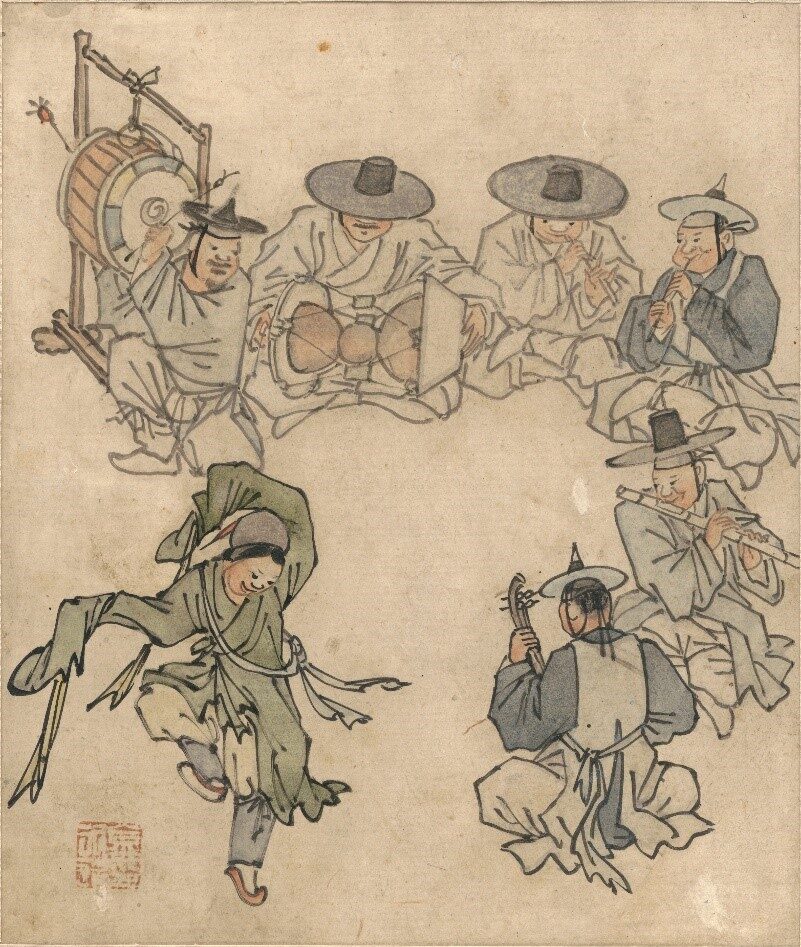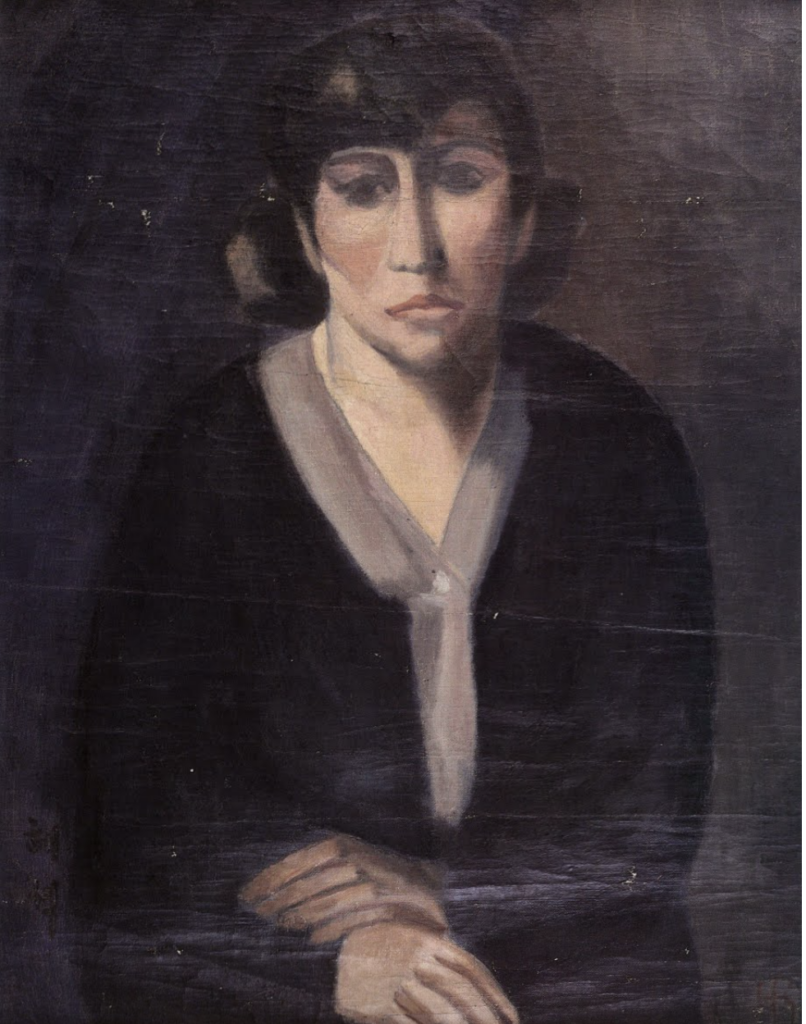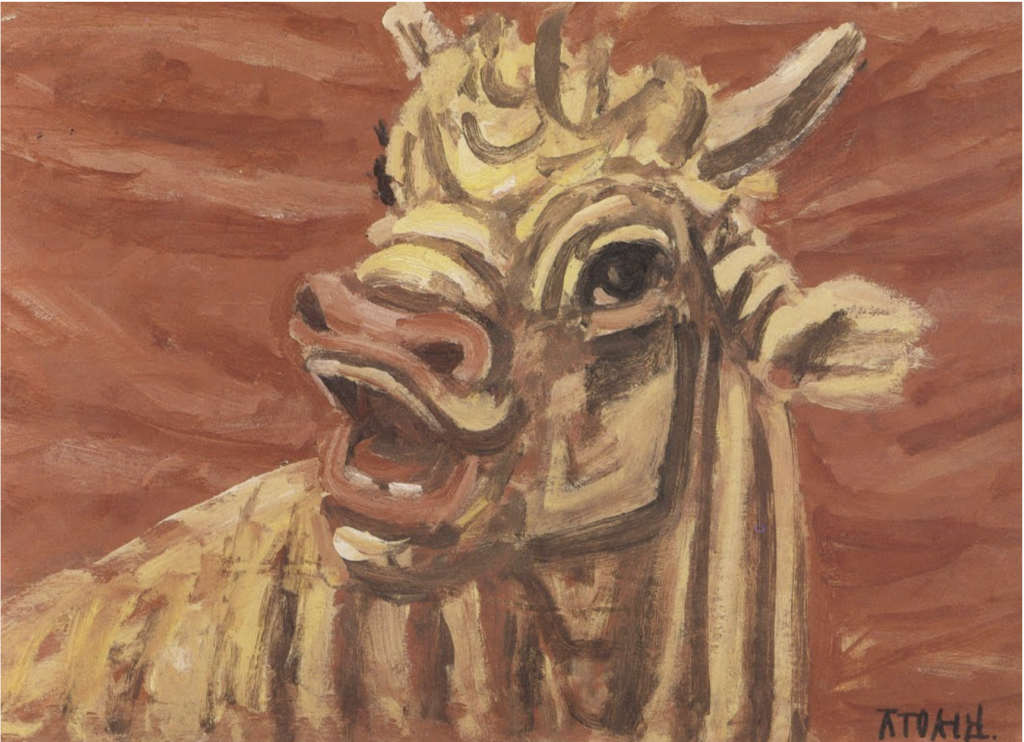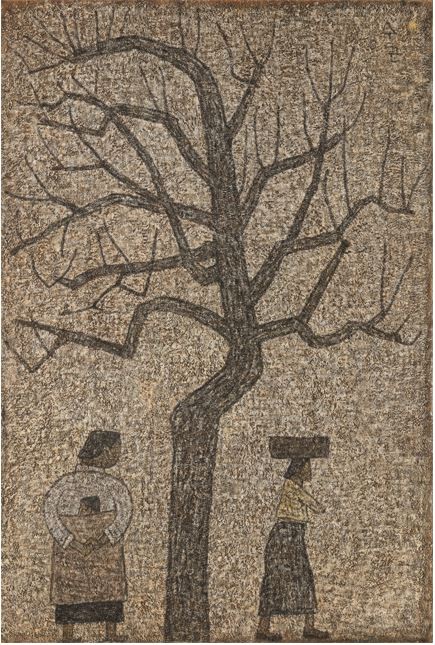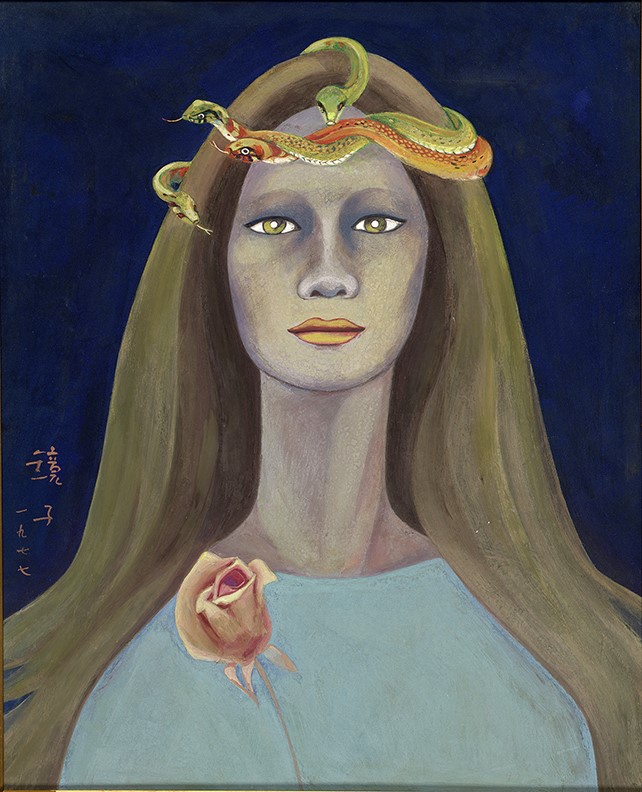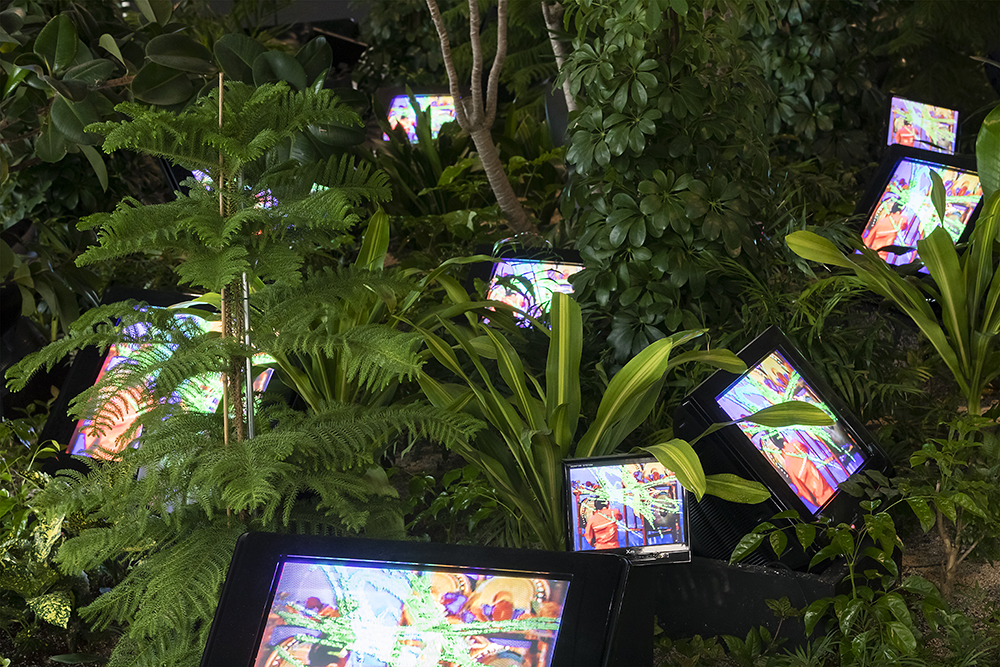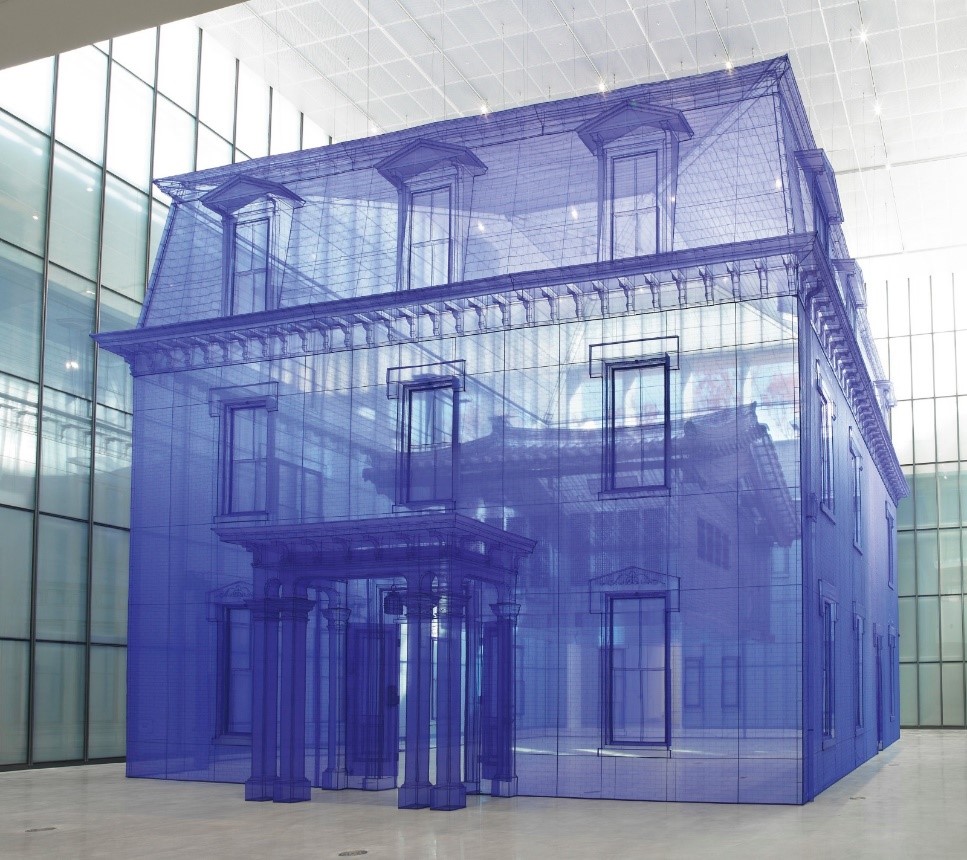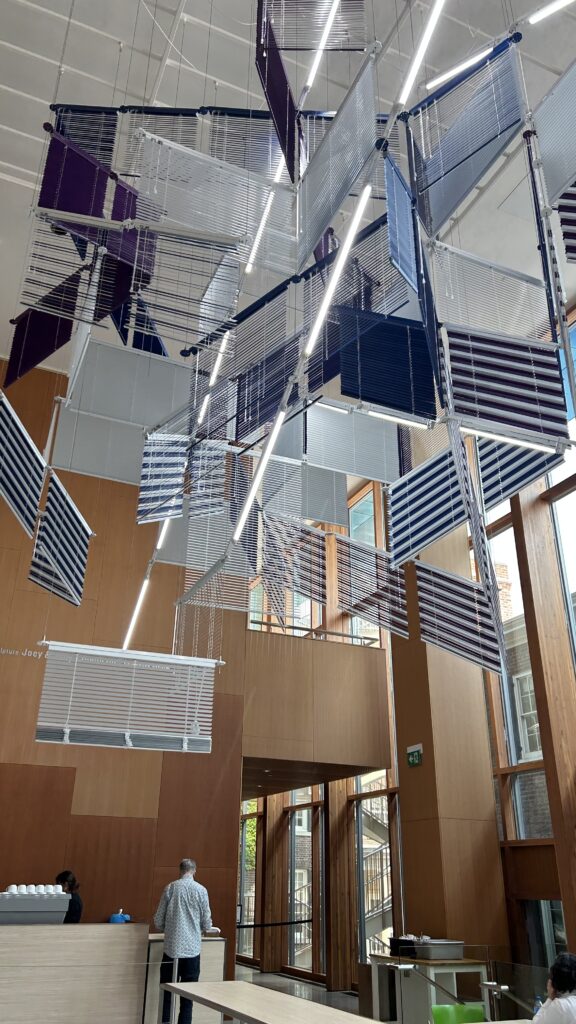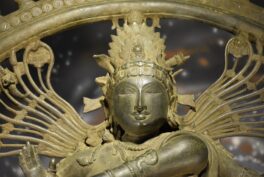1. Grass and Insects by Shin Saimdang
Joseon dynasty painter Shin Saimdang (1504-1551) is most admired across Korea. Her image on the 50,000-won banknote, the most valuable one in South Korea, substantiates her significance. Although Shin is revered mostly as an epitome of a good wife and wise mother, she also possessed artistic accomplishments that deserve as much attention as her dedication to Confucianism.
During her lifetime, Shin was a polymath with remarkable talents in poetry, calligraphy, painting, and embroidery. Take the painting Grass and Insects. The original is a part of a ten-panel folding screen. Yet with meticulous rendering techniques and vivid color schemes that endured hundreds of years, the image has transcended its initial form to become a popular motif referenced in embroideries.
2. Moon Jar by an Unknown Artist
The moon jar has a more long-standing Korean name. That is, baekja, or the white porcelain manufactured during the Joseon period (1392–1910), when white was the preferred color.
However, at the 2018 Pyeongchang Winter Olympics, the moon jar was cited as a direct influence on the Olympic cauldron, even though the term is only a twentieth-century variation of the Joseon-dynasty baekja popularized after the artifact became known internationally for its minimalist form and color, as well as its distinctive, moon-like shape achieved by joining two half-spheres together. The same object has long been a part of the local Koreans’ everyday life that they call daeho (big jar).
3. A Dancing Boy from the Album of Genre Paintings by Kim Hong-do
Kim Hong-do (1745- c.1806) from the Joseon dynasty was a painter of everyday life. His brushstrokes meticulously captured the common people and their activities. Examples include A Dancing Boy, which captures the energy of a dancer lifting his limbs to the rhythm. Beside him, the sextet plays Samhyeonyukgak in the background. This type of Korean traditional folk music historically consisted of set pieces, but it attracted audiences from all walks of life. The nuanced and sinuous lines add expressiveness to the clothing and facial expressions. Furthermore, the dynamic composition, with the performer placed near the center and musicians forming a circle around him, helps shape a conviviality. A Dancing Boy is one among 25 paintings on the daily lives of Joseon peasants, including Village School, Plowing, Wrestling, Roof Tiling, Blacksmith’s Workshop, Tavern, At the Well, and Rice Threshing.
4. Self-Portrait by Na Hye-sŏk
Na Hye-sŏk (1896-1948) was a Korean feminist, poet, writer, painter, educator, and journalist. She is considered to be the first feminist writer and painter of Korea and also one of the first to adopt a Western style of painting within the country. Hyeseok also forayed into feminist novels and short essays to criticize the marriage practices of her time.
This painting was made in 1928 after her journey around the world and a year-long stay in Paris in 1927. Self-Portrait was the beginning of a cycle of works that incorporated Fauvist sentiments and style. By painting herself in a calm, neutral state, Na calls back her role as a leader of the sin yeoseong (new women) movement in Korea and more broadly, her longing for personal and social freedom as a young woman in an ever-changing nation under Japanese colonial rule (1910-1945).
5. A Bull by Lee Jung-seob
Lee Jung-seob’s (1916-1956) subject matters usually consisted of cows, children, and family. But his love for cows was extraordinary. A cow was more than just an animal for the artist; it was also a sight so common across the countryside that the very image of a “cow” started to symbolize the late Joseon’s unwavering national spirit during the Japanese colonial period. This friendly creature and the history thus became the driving forces behind many of his paintings.
Lee painted Bull amid the Korean War (1950–1953) while being separated from his family. Perhaps the life change makes his cow paintings speak a different narrative than his work on other subjects. This one, in particular, seems to inhabit deep, emotional cues as much as it lets it out through the eyes of a cow in the painting. The image of a cow thus turns into something powerful that brings out the artist’s desire, which might speak of an anticipated family reunion. And the cow, for Lee, almost becomes a portraiture of self, according to Heami Park from Gallery Hyundai: “In choosing the cow as both subject and reflection of self, Lee was speaking to the labor, sacrifice, diligence, and sincerity of his people, as well as revealing the deeply place-based nature of the Korean experience.”
6. Tree and Two Women by Park Su-geun
Park Su-geun (1914–1965) took substantial inspiration from French painter Jean-François Millet (1814–1875), granite Buddhist sculptures, pagodas, and unearthed Goguryeo (37 BCE–668 CE) tomb wall paintings. He made his name through painting a muted gray-toned palette and a textured surface that is often “stone-like.” Most of his subject matters are people in their daily activities, often women and children, which were partly a repercussion of the Korean War (1950–53) and the casualties it caused. Since war has been associated with men, Park’s art reminds us that the postwar hardship is often for widows, single mothers, and daughters to shoulder.
Tree and Two Women encapsulates his empathy for women and reveals, from the perspective of motherhood, the previously silenced weight of living imposed on them after the Korean War. Regarding this, The Metropolitan Museum of Art states: “Painted in his rough style, the women take on a monumental permanence inspired by monuments and statues, a connection that may also be an artistic response to Korea’s rapid postwar transformation.”
7. The 22nd Page of My Sad Legend by Chun Kyung-ja
Painter, writer, and professor Chun Kyung-ja (1924-2015) was well-traveled. She is known for combining the traditional chaesaekhwa (oriental color painting) with Western oil painting. While her work depicts people and landscapes worldwide, the most notable ones are her portraits of women.
The 22nd Page of My Sad Legend features a woman with arresting eyes. The white pupils and gold irises are one of Chun’s unique and ethereal ways of depicting her inner world. As quoted from the Seoul Museum of Art, the painting is “saturated with her feelings of solitude, defiance and ‘han‘ (deep grief)” from her divorce and the death of both her sick sister and father in 1951. In addition, the snakes wrapping around like a crown is a powerful iconography Chun would frequently turn to. Snakes hold a significant place throughout her creative process. They have been, wrote the artist in her 1996 essay, a “life-saving water which brought back memories of my hometown.” In our case, a snake overhead could symbolize healing, self-acceptance, as well as coping with lifelong loss and loneliness.
8. TV Garden by Nam June Paik
Nam June Paik (1932–2006), a video art pioneer bridging art and technology from East to West, embraced fluidity and change. With his fingerprints on music, videos, robots, sculpture, and performance, many of Paik’s collaborations were transregional and multidisciplinary. He was part of the Fluxus movement, which Tate defines as “an international avant-garde collective or network of artists and composers founded in the 1960s.”
An example of such boundary-breaking practices is TV Garden 1974-77. The work helps define Paik’s projection of a future where technology intermingles with nature. Influenced by the Buddhist belief that everything is interconnected, he suggested an idealized world of harmony rather than a dystopian one dictated by high-tech automatons.
9. Home within Home within Home within Home within Home by Do Ho Suh
Do Ho Suh is an artist specializing in large-scale installations using light transparent nylon fabric. Displacement is a central theme in his work. His enormous life-size installations often bring out a nostalgia associated with the places he used to stay. Suh excels at precision and detailing; he then combines both strengths to manipulate scale beyond the setting. In fact, Suh once folded up a few-foot-tall artwork into his trunk! This operation intends to highlight the almightiness of transport culture and how history, memories, and emotions become evoked and mobilized from his previous dwelling places.
Home within Home consists of two layers: his Victorian-style apartment in New York and the traditional Seoul house (hanok) he grew up in. This bitter-sweet masterpiece touches upon the idea of taking a home in the past with one, wherever they go—in their mind.
10. Woven Currents–Confluence of Parallels by Haegue Yang
Haegue Yang is one of the most prominent contemporary artists in sculpture and installation. Her work deals with mass-produced, everyday items: light bulbs, jingle bells, Venetian blinds…There is no limit here. Throughout, mobility is celebrated; the same applies to Woven Currents–Confluence of Parallels.
The Venetian blinds in Woven Currents–Confluence of Parallels underlines flexibility; the blinds can be raised, lowered, opened, and closed by choice or action. Housed in the Art Gallery of Ontario, this installation was primarily inspired by the 1613 Two Row Wampum Treaty (the Guswenta/Kaswentha) between the Iroquois (the Five Nations/Haudenosaunee) and the Dutch government. It forms a metaphor, juxtaposing the malleable Venetian blinds with the ongoing friction between Indigenous peoples and settlers in Canada.
